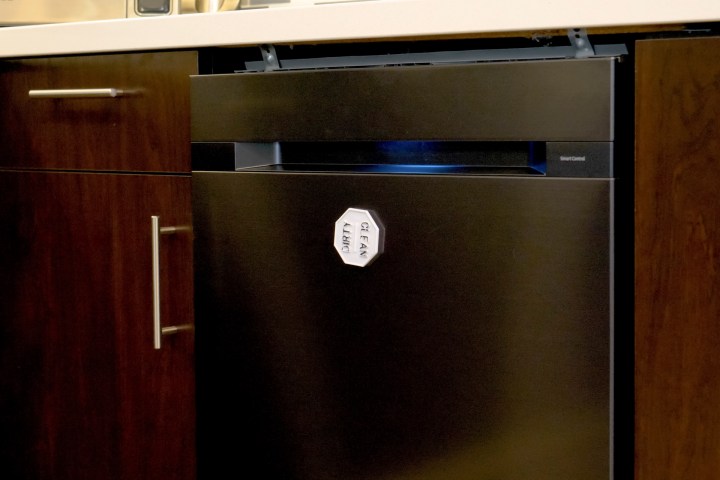
With a name like “dishwasher,” you might think you know exactly what the appliance is capable of. But you’d be surprised just how much your dishwasher can do beyond giving you a clean plate to eat on. With the right settings, a dishwasher can be turned into the ultimate cleaning appliance for any number of household items. Here are some of the things you had no idea your dishwasher could do:
Cleaning and sanitizing
Sponges and dishrags
Your cleaning supplies are sure to get dirty eventually, and then what are you supposed to do? You can give them a thorough cleaning by putting them in your dishwasher. Place them in the silverware basket to make sure they are secured in place and use the hotter settings to kill off any of the germs that are still hanging on.
Cleaning accessories
Vacuum tubes, floor brushes, dust pans, broom heads—all of these tools help keep your home clean but get dirty in the process. Instead of cleaning them out by hand, just toss them in your dishwasher. Keep them in a mesh laundry bag or similar item to secure them, and don’t bother with the drying cycle. Just let your dishwasher give them a good rinsing to break up the grime.
Lighting fixtures
You don’t realize just how dirty your lights get until you have to replace a bulb or take a closer look at them. You can give them a polish that will have them looking new again by placing them in your dishwasher. Make sure the glass is sturdy enough to go through the wash — you’ll want to stick to hand washing more delicate fixures. But for most lights, a gentle cycle through the wash should do the trick.
Fans and vent covers
Despite spinning all day and keeping your home the perfect temperature, fans and vents can get quite dirty over time. If you have a plastic or aluminum vent cover, toss them in your dishwasher and give them a thorough cleaning. You’ll want to keep enameled or painted ones out to hand wash, though.
Shoes
Have a pair of sandals that have several summers’ worth of dirt on them? Are your rain boots in rough shape? You can toss them in your dishwasher and give them a fresh out of the box look. Even sneakers with canvas tops and rubber soles can withstand a cycle in the dishwasher. Just avoid running a drying cycle.
Hats
Hats are a tough piece of clothing to clean, but you can just toss them in your dishwasher and let the machine do the work. Try keeping them in place on the top racks with a rubber band and run the wash cycle with no detergent to avoid causing any discoloration to the hat.
Plastic toys
Your child’s favorite toys are sure to suffer some wear and tear over time, and maybe even get a bit dirty. You can give them a fresh start with a full run through the dishwasher. In most cases, the toys should be fine to run in a standard cycle, even alongside other dishes.
Pet toys
Check the packaging on your pets’ toys before trying this, but most of them should be dishwasher safe. Plastic toys especially should have no problem withstanding a standard wash cycle. As for rope toys and other chews, you’re probably best to keep those out of the wash.
Sports equipment
Shin guards, knee pads, shoulder pads, and all of the other equipment that keep your kid safe during sports need to be cleaned. You can give them a wash by tossing them in the top rack of your dishwasher. Then your kid can hit the field and be protected from injury and lingering germs.
Hair care products
Over time, your hair brushes and headbands and hair ties all start to collect dirt and grime. That’s probably not what you want in your hair. Remove excess hair attached to the accessories by hand first, then give them a run through the dishwasher’s wash cycle. Keep natural bristles and wooden handles on the sidelines, though.
Food preparation
Alright, so it pretty much makes sense that most objects that aren’t going to melt or be destroyed by water and heat can be washed in a dishwasher. As long as they are similar enough to the kitchenware that you’d normally toss in there, there shouldn’t be a problem. But did you know that you can also use your washing machine for food prep? Here are a couple of tricks you can try out.
Rinse vegetables
If you just brought in a whole bunch of greens from the grocery store and need to wash them, the dishwasher can do the trick. Skip doing the job by hand by instead placing your tougher veggies like potatoes and squashes in the top trays. Delicate one that may burst like tomatoes or berries should be moved to the bottom shelf and kept away from any moving parts. Run through with a cold wash. If you want, you can add vinegar in the detergent cap to rinse.
Steam vegetables
Need to do some dinner prep and out of space in your standard kitchen appliances? Your dishwasher can do the trick. Wrap up some vegetables that cook up quickly — think asparagus, carrots, squash, etc. — in some aluminum foil. Toss in some butter and seasoning for flavoring purposes, and place them in your dishwasher. Run a cycle without soap and you’ll be able to steam those veggies up in no time.
Steam fish
Just like veggies, you can steam fish. You’ll want thinner cuts of fish like salmon or halibut, as thicker ones aren’t going to cook all the way through. Keep the fish in packets so they can steam, and use a hot temperature cycle with water. Skip the soap, obviously.
Keep food warm
Beyond just steaming your food, the dishwasher is a solid alternative to the oven for keeping food warm. It’s meant to keep in heat, after all. Placer your food in and run a drying cycle to give your meal the extra heat it needs to make it to feeding time. Just don’t add a rinse cycle or any detergent, lest you ruin your dinner.


